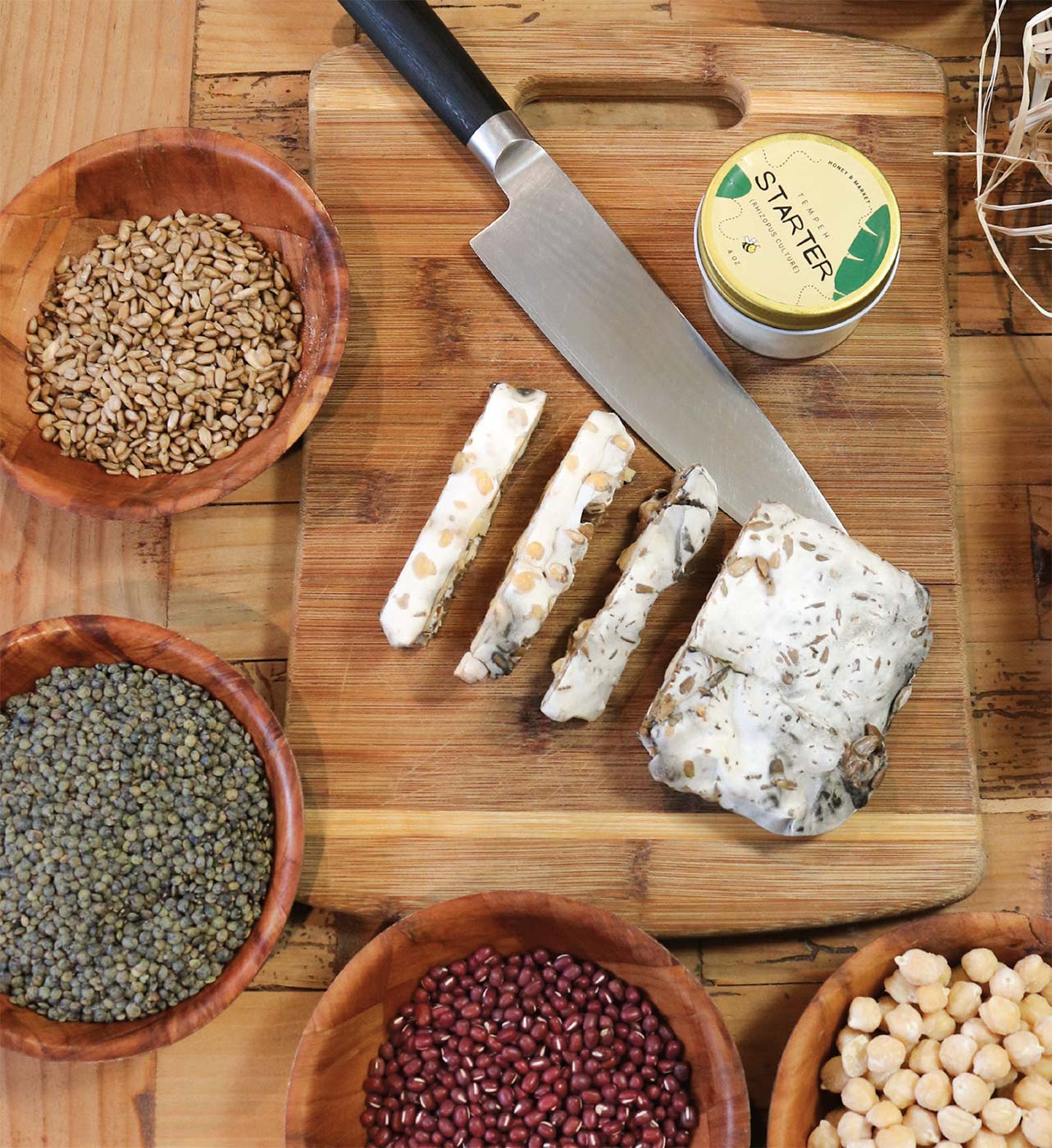
Fresh Tempeh
Fresh, uncooked tempeh isn’t for everyone. Once heated, however, tempeh mellows and takes on more of a nutty quality, with the mycelium acting similar to marbling in meat. “It adds this rich, almost fatty quality,” says Belanger. “It can be used in soups, stews, pan-fried, baked; it’s just so versatile.”
Ingredients
- 1 pound legumes, such as lentils, chickpeas or adzuki beans
- 2 tablespoons Rhizopus oligosporus culture (available online)
- 1 tablespoon vinegar, such as apple cider or white wine
- 1 large banana or ti leaf, available at ethnic food markets, cut into two 12-inch x 6-inch rectangles
Instructions
- Soak beans overnight, then drain. Cook beans until tender but firm. Drain, and spread on baking sheet to dry.
- In a large bowl, mix beans with Rhizopus culture and vinegar, and place approximately ½ to ¾ cup in the center of a banana leaf.
- Fold up each side of the leaf, then tie each packet with a rubber band or twine.
- Place leaf packets on a perforated baking sheet or cooling rack and leave in a warm, draft-free place for 1 to 2 days. The longer you ferment it, the firmer and denser your tempeh will be. Keep in a closed container in the refrigerator for 5 to 10 days or freeze for up to 12 months. Makes 2.
Notes
TEMPEH TIDBITS
- Rhizopus oligosporus feeds best off thin-skinned legumes like lentils and chickpeas.
- Be sure your workspace and equipment are clean, so the good mold isn’t competing with bad mold.
- Don’t overpack your tempeh bundles; mycelium needs room to grow.
- Tempeh doesn’t like excess moisture, so pat legumes dry before using.
- When wrapping, be sure legumes are completely covered so they don’t dry out.
- Any black spots (mold) on your tempeh are safe to eat. Avoid consuming tempeh with green mold.